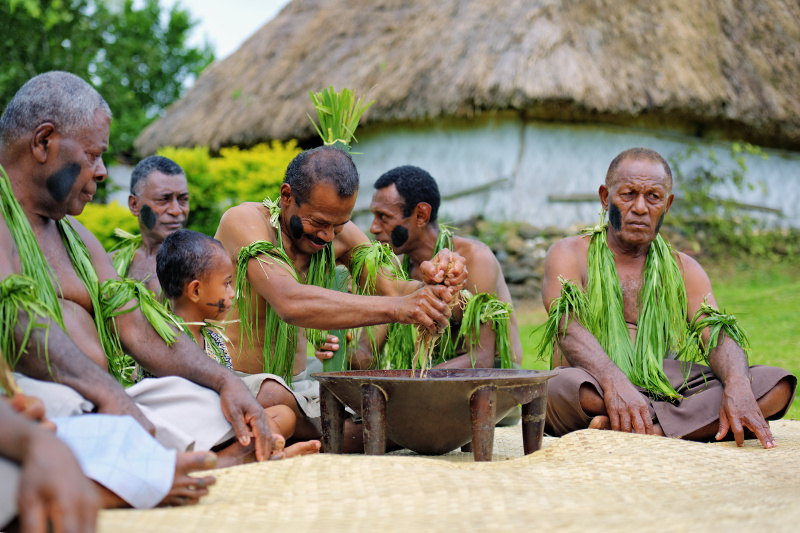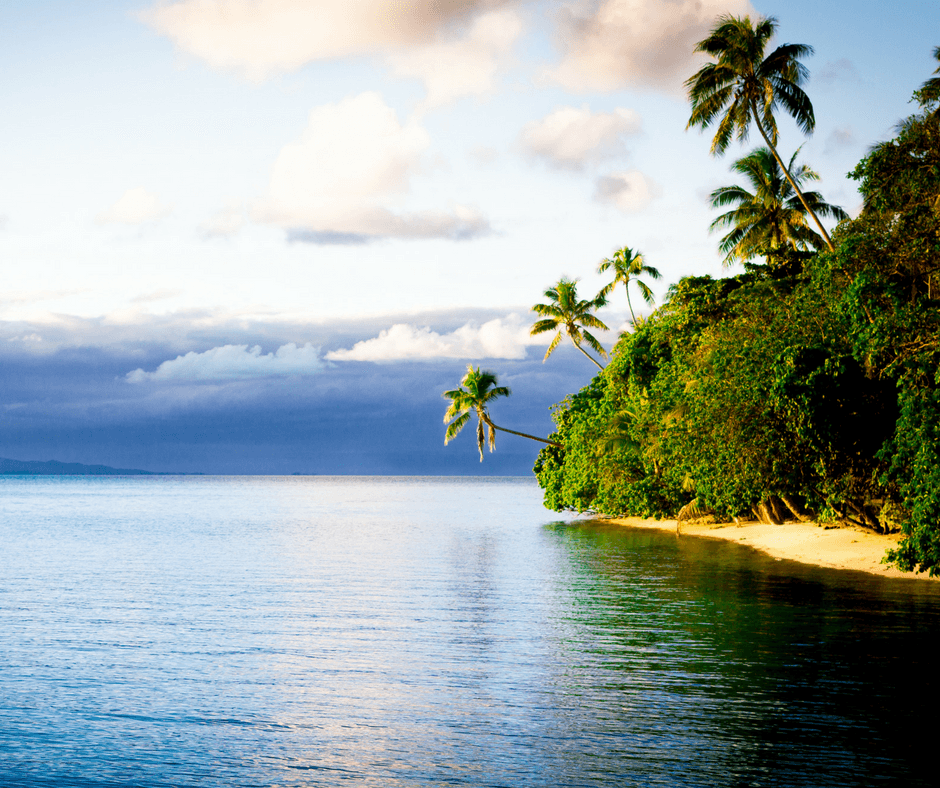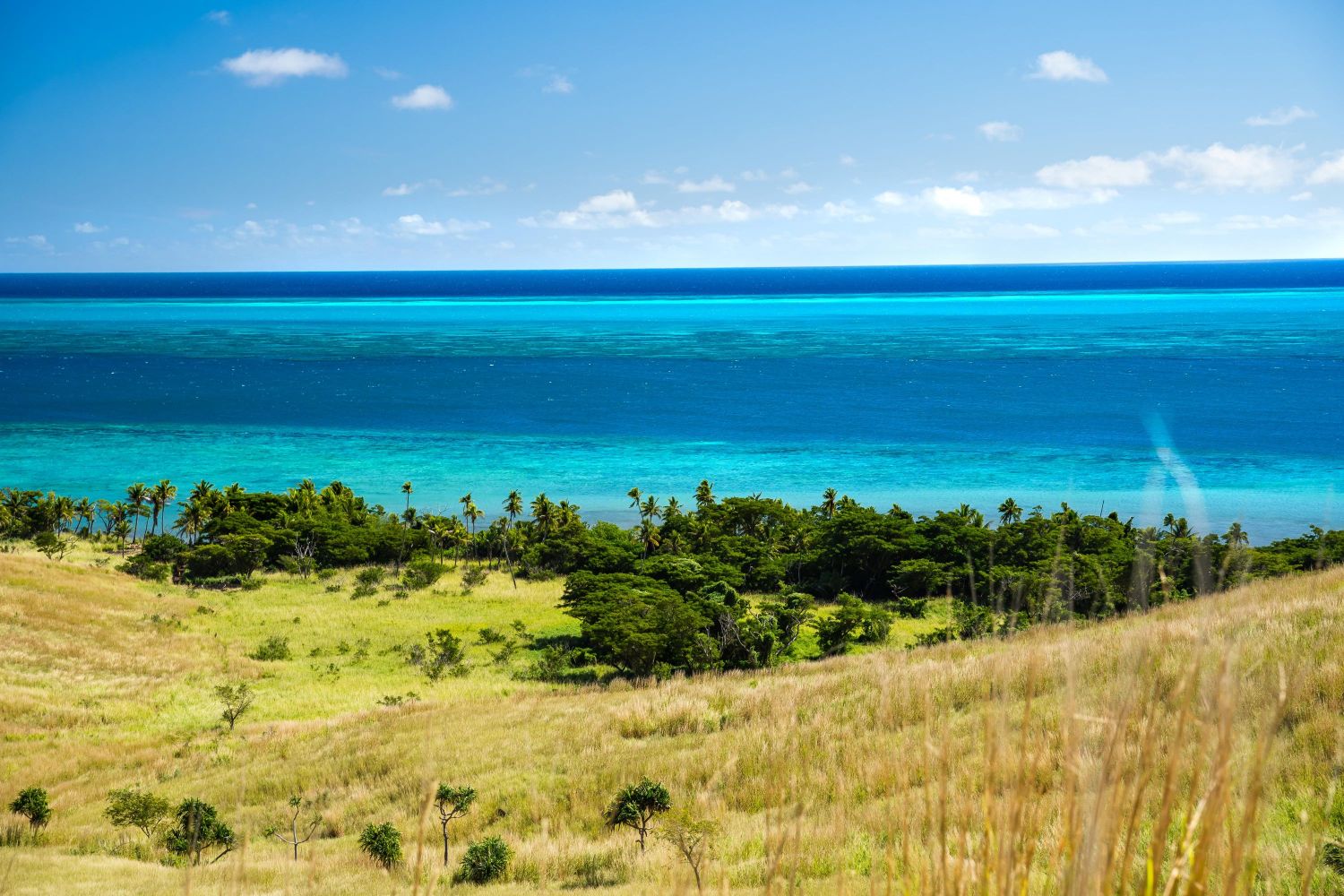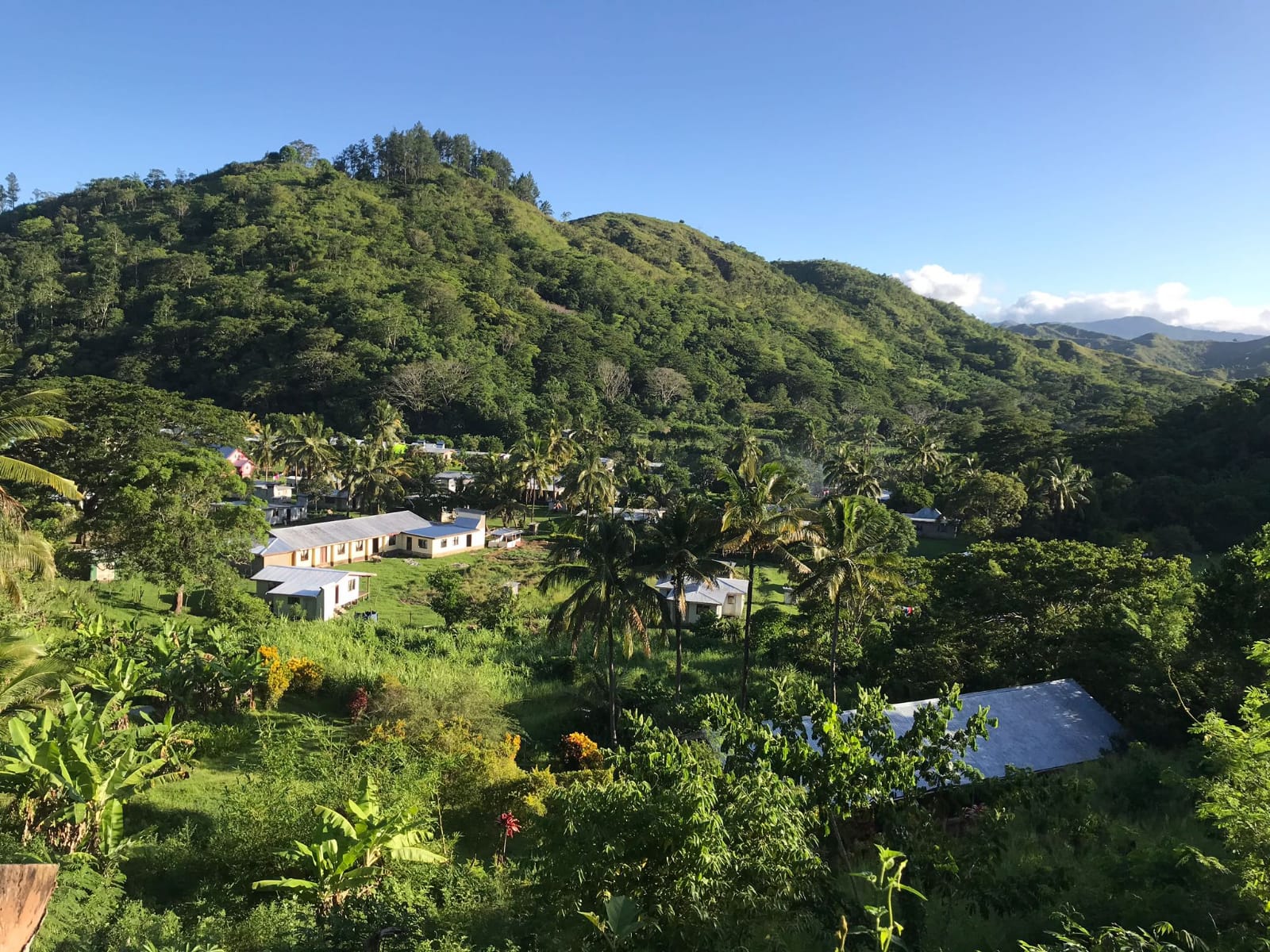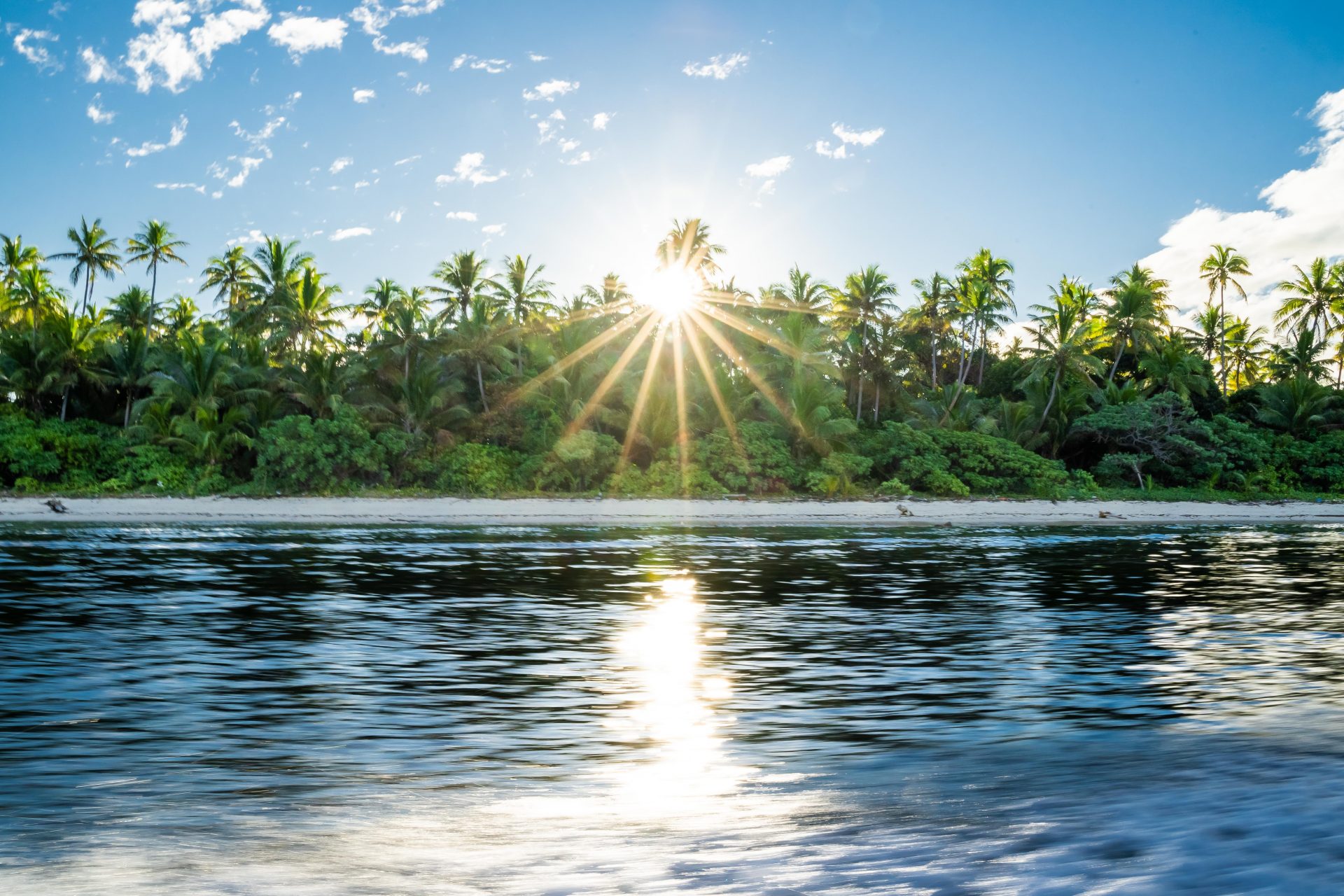Indigenous Fijian Culture
Fiji is an archipelago made up of some 333 islands in the South Pacific ocean, surrounding the Koro sea. The indigenous people of Fiji today are usually ethnically classified as Melanesian, although their social and political system is closer to that of Polynesia.
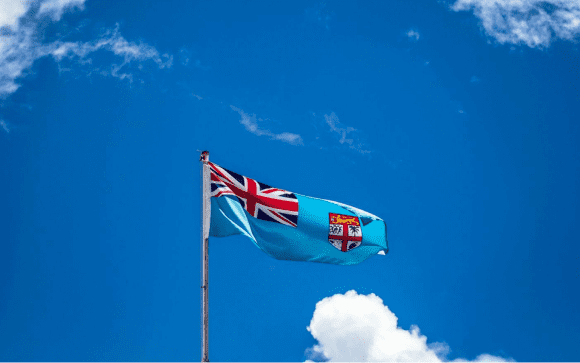
- Full name of the country: Republic of Fiji
- Region: Australia-Oceania
- Nationality: Fijian(s) (noun), Fijian (adjective)
- Official language: English, Fijian
- Population: 926,276 (2018 est.)
- Population growth: 0.56% (2018 est.)
- Currency (money): Fijian dollar
- Land area: 18,274 sq km (7,056 sq miles)
- Time zone: UTC +12
- Capital: Suva (on Viti Levu)
- Independence: October 10, 1970 (from the UK)
- Government type: republic
- National anthem: “God Bless Fiji”, by Michael Francis Alexander Prescott/C. Austin Miles (Adapted by Michael Francis Alexander Prescott)
Fiji is an independent state after achieving independence in 1970, this independence caused a resurgence of patriotism which triggered a series of successful coups which led Fiji to become a republic. The country, as of the 2007 consensus (the latest reliable source) indicated that indigenous Melanesian people accounted for 56.8% of the population and Indians accounted for 37.5% (as a result of migrations that took place in the late 19th century) demonstrating a multi-ethnic and multicultural climate in Fiji today.
Check out the latest demographic of Fiji's population
In rural areas, the traditional system of authority remains in a village setting, the majority of land still belonging to the tribes. A hierarchy of chiefs presides over villages (koro), sub-districts (tikina vou), districts (tikina cokavata), and provinces (yasana). Despite the host of influences Fiji has encountered in its recent history, a strong sense of culture and heritage remains and as is evident in their polity and way of life.
This is guide aims to help you learn how to pronounce Fijian words before you encounter them in the rest of the module. There are a few sounds that we do not have in English, but otherwise, the language is relatively straightforward to read, just read the word how it looks.
a- æ (Gap)
e- e (Elephant)
i- i: (Free)
o- ɒ (Hot)
u- u: (Hoop)
g- ng (Hang)
q- ng (Anger)
b- mb (Bamboo)
d- nd (Hand)
t- ch (Child)
c- th (Feather)
ai- aɪ (Bite)
au- aʊ (House)
ei- eɪ (Bait)
eu- eu: (Eh-oo)
oi- ɔɪ (Boy)
ou- əʊ (Toe)
iu- i:u: (Ee-oo)
So… Bula (mboola), Gone (ngoneh), Cakobau (thakombau).
Get the idea? Then you’re ready to dive in and immerse yourself in the beautiful culture of Fiji.
This section focuses on studying the origins of Fijian culture. Looking into where culture originates is integral for understanding it. You will learn about the historic roots of today’s Fijian tradition whilst also grasping how it has changed. Pre-Globalised Fiji looked very different to how you might see Fiji today, after being ceded to Queen Victoria in 1874 and after the widespread adoption of Christianity its traditions and culture have changed significantly. But in its study lies the foundations for everything that remains in the unique Fijian Culture today… its polity and way of life.
Here’s a brief introduction to what Fiji would have looked like 200 years ago, exploring:
- Religion as the foundation of culture (00:40)
- Chief and Village (16:13)
- Tribal Relations (25:52)
- First Western Contact (27:50)
This virtual tour around some of The Fiji Museum’s best exhibits is an amazing opportunity to learn more about what is discussed in the video. There are some amazing photographs, items and clothing to be seen.
Virtual Tour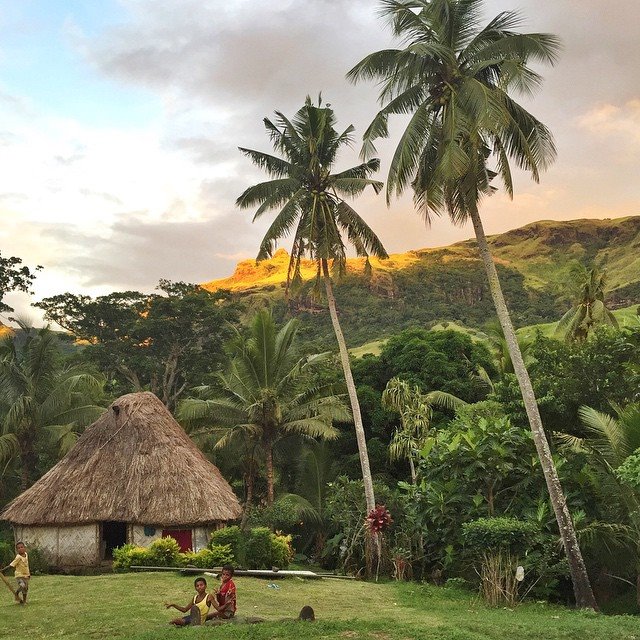
This article gives a very detailed overview on understanding the structure and origin of Fijian Society, in past and contemporary times. The article goes into detail about topics discussed above; the complex ideas of yavusa, mataqali, tokatoka and mana.
The Tuka movement was a revitalisation of the 'old-ways' movement, a militant response to colonialism towards the end of the 19th Century. It provides a fascinating insight into the initial troubles between the old and new in 19th Century Fiji.
Vanua is an integral concept for Fijians in how they relate to one another, their identity, their belonging, ancestral heritage and connection to their land.
We don’t really have a comparative term in English that comes close to what the concept means in Fijian. The literal closest working definition in English of vanau as used in day to day in Fiji is ‘land’ but when alluding to the Fijian concept it can be more related to ‘being’.
Here’s a brief conversation with Think Pacific’s Operations Manager Laisa Drua. Laisa provides her insights on what is a very alien concept in Western society. Topics covered:
- What vanua means to a Fijian
- Where it comes from
- How it is manifested in day to day life
- The future for the concept of vanua
“The living soul or human manifestation of the physical environment which the members have since claimed to belong to them and to which they also belong. The land is the physical or geographical entity of the people, upon which their survival… as a group depends. Land is thus an extension of the self. Likewise, the people are an extension of the land. Land becomes lifeless and useless without the people, and likewise the people are helpless and insecure without land to thrive upon.” (Asesela Ravuvu, 1983, pg. 76)
It is a concept that encapsulates the co-belonging of Fijians to the land and the land to the Fijians. It is a concept that explains the polity of pre-Colonial Fiji and still survives to this day.
Here's a great article going into detail about 'vanua'. It is considered in light of its three senses: spirits, places and people.
Essential to an indigenous Fijians understanding of their identity is the understanding of the relationship one has to their family (tokatoka), their mataqali and their yavusa all stemming from the common ancestor spirit of the particular tribe, the kalou vu. When one familiarises themselves with this map of self-understanding, they become part of a body that is much larger than their own.
This is the reason one of the first questions a Fijian will ask when meeting a stranger is ‘where are you from’, it is considered vital to understand as part of their identity. The answer will often also affect how the stranger is treated afterwards, in terms of dialect spoken and often down to historic tribal relations.
Mana is an essential concept to understand when tackling the larger concept of vanua. Mana can almost be understood as ‘blessing’ or ‘spiritual power’ and comes from the ancestral spirits, the kalou vu themselves. A particular yavusa owes its existence to their unique ancestral gods from the first landing at Kauvadra and mana is the working idea that the greatest concern of the kalou vu is the wellbeing and thriving of their yavusa, mana being the influencing power in the world. It was believed that these spirits guided the wellbeing of the yavusa from afar and the people gave gifts in return for favourable times and when a message needed to be received. They could be pleased with gifts to maintain the natural balance and prosperity of the land and also for victory in battles between tribes. Mana was believed to be received from holy sites and traditional ceremonies.

What we see in this spiritual relationship between people, land and gods is the interconnectedness between everything. The people belonging to a particular yavusa claim ownership of the lands that were historically owned by them, bestowed upon them by their ancestor god and everything in it as the land sustains the people just as the people sustain the land.

The concept of vanua means that land is seen as an extension of the self and that the very self is interconnected with everyone and everything in the same yavusa. On a larger scale, the concept is used nowadays in reference to the whole of Fiji and Fijians. Although sometimes belonging to different yavusa, they are Fijians and exist together in the wider sense of vanua. The accompanying concept of kerekere stems from vanua and really demonstrates the treatment of Fijian to Fijian as family members. Kerekere is unconditional giving based on the concept that time and property is communal.
This article below reveals some fascinating COVID-19 context of Fijians supporting eachother in times of crisis.
Concerns have been made in the acedemic circles about how this selfless giving and debtless support may impact social entrepreneurship and even the economy as a whole.
This article looks at the implication kerekere may have on social entrepreneurship in Fiji and discusses whether it may have an impact.
Alongside the belief of Christianity, many Fijians still demonstrate a profound belief in kalou vu and kalou yalo, the spirits of their provinces and villages. Beliefs of black magic also acompany these, and certain stories are passed down through generations in a particular province/village often relating to the origin of the vanua or a profound historic moment of its history. Here’s Lulu sharing the story of Sui from his home island Moturiki.
This section aims to give you an opportunity to learn about the contempory way of life fo Fijians, Fiji’s socio-political context and an opportunity to see how Fiji has changed from the days of old.
A documetary looking at the Fiji in the 1940. Remember, this documentary was produced when Fiji was still part of the British Empire. It focuses on giving an overview of Fiji’s economy and population.
This is far more recent documentary by the BBC. A general overview is given betweeen (00:00-10:11). Then moves on to focus on the areas of education, sport and culture, climate change, politics and economy and health and medicine.
An immediate challenge that becomes obvious is the political struggles that Fiji has experienced in recent times. The claim to the ownership of land, the very connection to this sense of togetherness, has caused political rifts in Fiji’s history. The tensions between the Indo-Fijian population and Fijians really comes down to this idea of belonging as the Indo-Fijians are not traditionally believed to be a part of or have any ownership of the vanua. It has been a source for debate as to whether the concept of vanua was used as an excuse by far-right nationalist in the coup d’états of Fiji’s recent history, but whether it was or wasn’t, it stands as a reminder of the rift between the two largest ethnicities in Fiji.
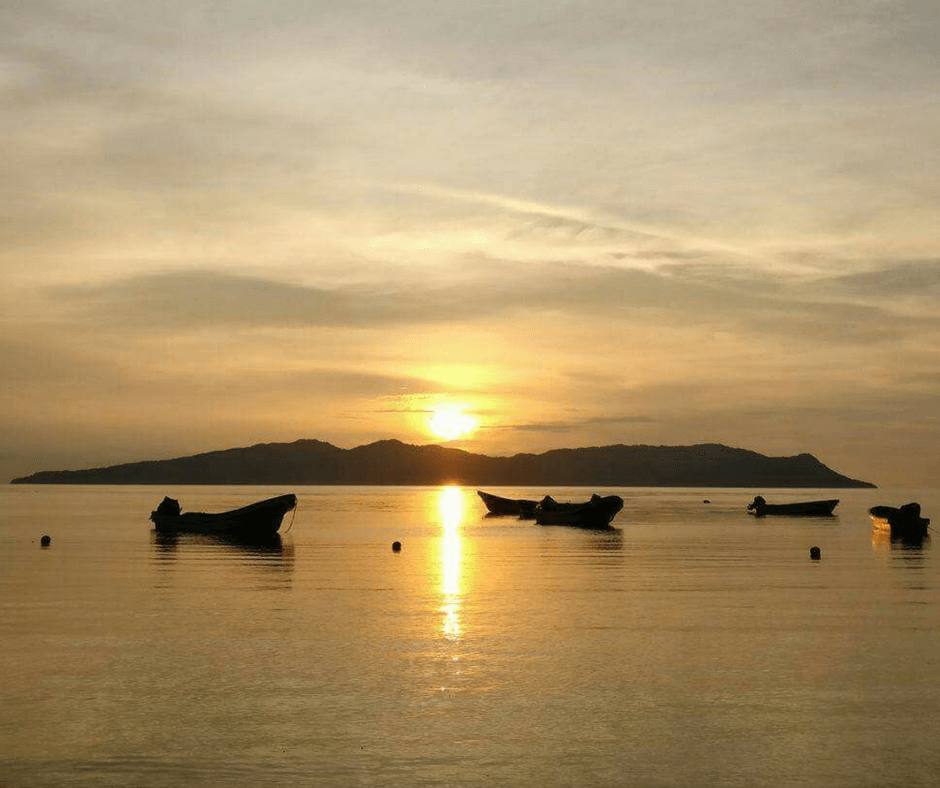
Here, we’ll look at the impact that the population of Indian descent has had on Fiji in its recent history, the Indo-Fijians own history and their culture.
Click here to learn about the history, the culture and the influence of the Indo-Fijian population of Fiji
This article posted in the ‘Fiji Sun’ calls for the acknowledgement of Indo-Fijian rights. It was posted on the day celebrating Indo-Fijian ancestry, Girmitiya day:
This paper covers some major points as for an explanation of the racial tensions as well as the potential steps for an improvement of the situation:

Fiji’s political history has certainly not been simple. Major political events include the shifting from the old ways of land governance to being ceded to Queen Victoria in 1874 to be part of the commonwealth, as well as the resurgence of patriotism that led to the day of independence in 1970 where they broke away from this very rule. Abrupt moments in history like these born from tensions between the old and the new made Fijian politics volatile, with many questions about identity and rule unanswered and integral issues within society not dealt with.
This documentary from 2006 deals with the issues at the heart of Fiji’s military coup d’états. It includes some fascinating interviews and offers a really powerful insight to the problems at the heart of the political strife. This particular documentary was released ahead of the general election of 2006 and before the latest of Fiji’s coups. It features interviews with Frank Bainimarama, the current Fijian Prime Minister before he rose to that position.
There was a real divide between the ethnic Fijians and the Indo-Fijians especially surrounding the topic of rights. These divisions have led to military coups featuring in Fiji’s recent history. Two 1987 coups saw the overthrow of the elected government of Fijian Prime Minister Timoci Bavadra, the deposition of Queen Victoria II as Queen of Fiji and the declaration of Fiji as a republic. These were initially blamed on the social tensions between the two major ethnic groups of Fiji and the 1987 general election really became an ethnic Fijian vote vs Indo-Fijian vote with similar numbers on either side.
The result of the 1987 general election left a multi-ethnic labour coalition supported mainly by the Indo-Fijians in power in government replacing an indigenous-led conservative government. After much disapproval of this democratic decision amongst indigenous Fijians, the military staged a coup and disposed of the elected government.
The 2000 coup was a similar story, seeing the elected prime minister of Indian descent, Mahendra Chaudhry, overthrown by a civilian coup of right-wing nationalists.
After Commodore Frank Bainimarama declared martial law and resolved the crisis by force, he assumed power in an interim government.
The 2006 coup really resulted from the tensions remaining from the one in 2000 and after the political pressure of the complex 2005-2006 political crisis. This particular coup d’état again involving the military taking command of government resulted in Frank Bainimarama becoming Prime Minister. He remains Prime Minister to this day and is taking steps to outrule racism in Fiji.
Today, there is peace in Fiji. Racial tensions are being tackled slowly but effectively by the current government with Frank Bainimarama as Prime Minister. Recent legislation to remove the constitutional discrimatination of Fijians of Indian decent now allows them to be known as ‘Fijians’ first and foremost rather than ‘Indo-Fijians’. This is an important step forward in the equal treatment of all citizens in Fiji.
An article urging Fiji to acknowledge its ethnic makeup in order to acheive greater political stability.
An academic journal entry covering the major economic implications of the coups.

Economically, Fiji is full of contradictions. Its natural resources make it one of the healthiest economies of the Pacific Islands, but much of the population survives on subsistence farming. The farming and processing of sugar constitutes the bulk of the country’s industrial activity. Estimated gross domestic product (GDP) in 2017 was US$8.629 billion, with agriculture contributing 13.5 percent, industry 17.4 percent, and services 69.1 percent.
The two mainstays of the Fijian economy are the sugar and service industries. In 2018, 38.6 percent of the workforce was employed in agriculture. The demand for Fiji’s forest resources has increased significantly.
Industrial pursuits include mining, manufacturing, and construction. Gold, gems, and petroleum are the main exports of the mining and extraction industry, while the garment industry is the flagship enterprise of the manufacturing interests. Food and beverage processing are important industries in Fiji as well.
A large number of Fijians participate in subsistence-level farming and produce no goods for export. There are also large commercial plantations that grow sugarcane and coconuts. Sugarcane is the most widely grown commercial crop, while rice is widely grown by subsistence farmers. Fijian farmers also raise cattle, hogs, chickens, and fish.
In 2018, an estimated 870,309 tourists visited Fiji, according to the Fiji Bureau of Statistics. That year the tourism industry was responsible for 38.9 percent of the GDP and 35.3 percent of employment. The main attraction for tourists visiting Fiji is Nadi, on the western side of Viti Levu. It relies almost entirely on income from tourism and, as such, offers nearly everything a tourist could need. Many of the smaller islands provide excellent snorkeling and other outdoor activities.
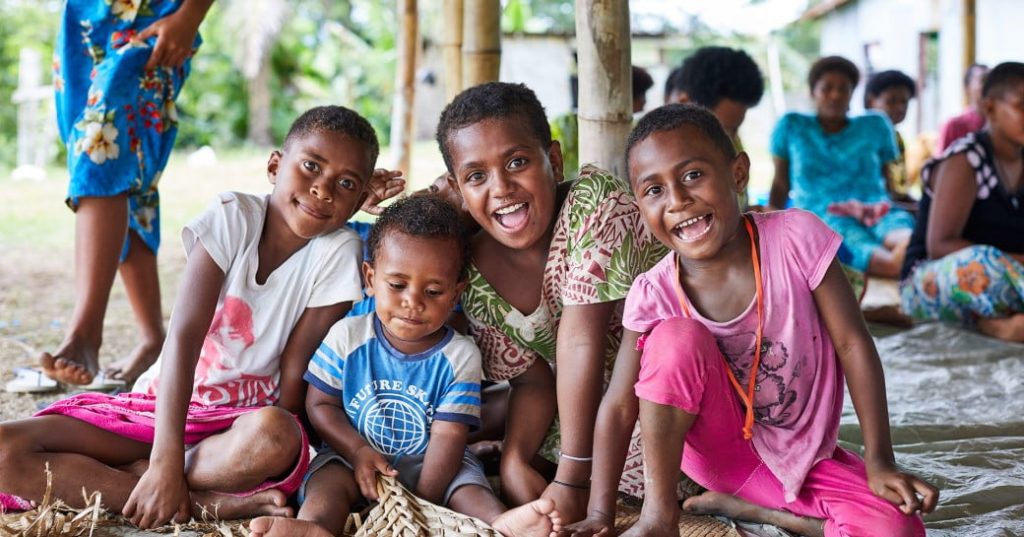
Officially, education in Fiji is mandatory for children beginning at age six. Primary school lasts six years, secondary four, and upper secondary three. However, although primary education is free, associated fees and expenses prevent some children from attending. The 2013 constitution stipulates that the government should “take reasonable measures within its available resources” to ultimately introduce “free early childhood, primary, secondary and further education.”
Fijian cuisine is representative of the many cultural influences that have touched the islands throughout history. The flavors of Western, Chinese, Indian, Polynesian, and Melanesian cultures are all present in the meals of modern Fiji.
As one might expect, seafood is prevalent in the Fijian diet. Other mainstays include beef, pork, poultry, taro root, leaves, yam, and breadfruit. Tropical fruits such as guava, mango, banana, lime, and pineapple are popular, as is coconut milk, which is used in a variety of recipes. Common spices and sauces include garlic, ginger, turmeric, coriander, fenugreek, cumin, soy sauce, and chili peppers.

A Fijian dinner might consist of meat, poultry, or fish and a side dish of boiled taro leaves and cassava. Many dishes are prepared as curries, demonstrating the influence of Indian culture on the Fijian diet.
Kava, known locally as yaqona, is the national drink of Fiji. Although it was once reserved solely for religious ceremonies, it is now drunk socially throughout the islands. While there are still ceremonial aspects associated with its consumption, drinking Kava has become a major feature in the Fijian way of life today.
There are over 300 dialectical variations of Fijian across Fiji. Standard Fijian, commonly known as ‘Bauan’, is the most widely used. Here’s a fascinating interview with Dr Paul Geraghty of the University of the South Pacific, the world leader of Fijian language and cultural studies explaining the history of the Fijian language and the significance of its study. He also shares his insights on the broader concepts of culture and assures us that it is vital to understand language if you are to fully understand a culture.
This section covers rural village life in Fiji, where tradition is stronger than anywhere else. We will cover the specifics of traditional culture that are still as important as ever… the traditional ceremonies, hierarchal social structure, daily traditions and skills and finally deliberate how village life is changing in modern times from outside pressures.
Fijian villages are situated all over Fiji, by the coast, on the islands and in the interiors of the mainlands high in the mountains. Villages like Buliya are predominantly self-sufficient, most of the food coming from their own farms and fish coming from the sea or nearby rivers. Freshwater is sourced from local springs, rivers or from the rain. Very little needs to be purchased, only items deemed essential are bought using money earned from selling produce at markets or from money sent by village members or relatives working in the towns. Rural villages are made up of and rely on the resources that surround them; if you are living by the sea, expect to be eating a lot more fish than your friends in the highlands!
This video highlights some of the immediate differences between a Fijian village and our own homes.
It is essential to understand another culture if you are to truly respect it. Here are some tips from Harry so that if you ever visit a Fijian village yourself you know what to expect, what to do and what not to do. It is often in these differences that we see the unique Fijian way of life in all its beauty.
Different traditional leadership roles within a village help govern its wellbeing. These roles are respected by the government and they are often asked permission as the vanua if there is to be a new development in their land. Some roles are hereditary through someone’s association with a mataqali and some roles are elected by the village. Below is a list of some of the roles that exist in a Fijian village and their purpose.

The chief is the executive decision-maker of all things village. He is the eldest eligible member of the particular turaga mataqali and is believed to have the most mana (spiritual power) from the gods, making him a suitable leader. The chief will assume the most respected position during traditional ceremonies and his word is assumed to be almost holy.

The turaga ni koro is a man who is elected by the village to be the ‘headman’. He is the village’s administrator and ensures the smooth running of the village. He will often speak on behalf of the village in ceremonies and is generally one of the most eloquent speakers in the village. It is through the turaga ni koro that outside matters can interact with the village.

The mata ni vanua roughly translates to ‘ambassador of the land’. Today, they function as the chief’s spokesperson. They are the bridge between the village and the chief, it is through him that news reaches the chief. The mata ni vanua is considered to be a village elder and will sit close to the chief during official ceremonies.
It is not unusual for a village to have an elected marama ni koro or ‘head lady’ to speak on behalf of the women of the village. She also heads up the meetings of the women in the village. Traditionally, women have less of a say in the workings of the village and are traditionally believed to belong to the domestic lifestyle, being the centre of the family. Times are beginning to change however with women gaining more independence by the day. It is also not unusual for villages to now have an elected youth representative and usually a board for the dominant church.

This journal goes into detail about the roles of women in Fijian society, their history and their future. It considers in particular ethnic Fijian women’s spaces in economic, social and political action.
Women in Fijian Society
It’s fair to say that village life is much slower than most. There is a real emphasis on community, communal support, religion and traditional values. You can see the syncretism between the old and new more clearly in rural Fijian villages than anywhere else in Fiji because traditions are most prominent and relevant in villages. It is often the most alien of aspects in traditional village life that are the most special. This section looks at the lifestyle they live.
Here’s Danny from the Think Pacific team going through some of his highlights of village life. One element in particular that shines through in Danny’s selection is an overwhelming sense of community. These are examples of the manifestation of some of the topics we have already learned about.
Fijians are early risers, and if you spend a night in a village, expect to hear the first clatter of pots and pans and hushed tones of conversation at around 5.30 am. As a recipient of Fijian hospitality, you may well be given the best, and in some cases only, bed in the house (many people still sleep on woven pandanus mats on the floor). Families often live together or nearby with multiple generations living in one household, all having a role in the house to keep things ticking over.
Most homes are no longer built in the traditional thatched bure style but are simple, rectangular, pitched-roof houses made from industrialised materials requiring less maintenance. Although most houses usually have a tap in place and the odd electrical appliance, rural homes may not have electricity or plumbing, and people wash and get water from a communal tap fixed above a concrete square or the local river. Cooking is done over small kerosene stoves or an open fire. Toilets may be of the long-drop variety but villages may also have flushing toilets (especially near the main hall).
‘Fiji time’ is an affectionate term that summarises the relaxed timekeeping of Fijians. As funny as it sounds, this is a real phenomenon in Fiji and is very present in the village. If you organise a meeting at 4:00 pm, expect most attendees to turn up at 5:30 pm. This relaxed feeling bleeds into every aspect of village life. When the sun is out and it’s a hot, humid day, what harm can a 40-minute nap do? It’s no wonder Fijians always have a smile on their face.
To reiterate a point that we have already covered; kerekere is a central concept in a Fijian village. Kerekere itself can roughly translate to ‘request’ but really means an unconditional giving. Historically, it would ensure that every member of a village did not go without and can be best understood as the idea that possessions belong to the village rather than the individual/household. This would mean that if one particular evening you ran out of rice, you can just go next door and ask for some and it will be given to you with a smile. As a concept, kerekere best embodies the communal aspect of a village.


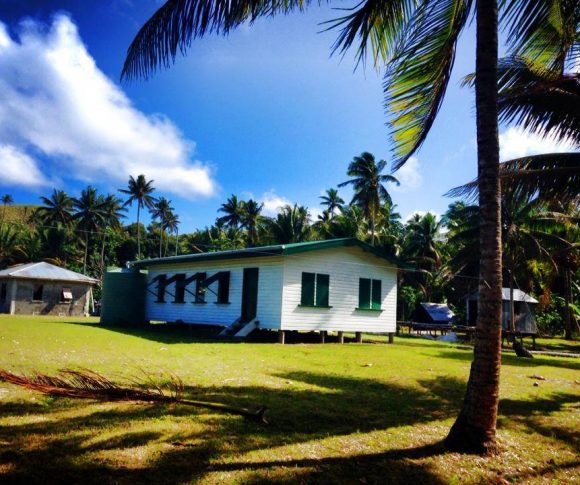
Yaqona (also known as kava/grog) is the traditional drink for communal occasions and ceremonies in Fiji. Years ago, it was saved only for certain ceremonies but today is drunk socially most days. It plays an essential part in Fijian society. The gods favoured this drink as a gift as do chiefs, presented as waka, its root form ready to be prepared. The presentation and drinking of yaqona signifies the highest respect and reverence for the chief.
Yaqona, the drink itself, is made by brewing the pounded roots of the Piper Methysticum plant (a variation of a pepper plant). The plant takes years to grow and mature. It is then pulled from the ground and the roots left to dry in the sun. For the preparation of the drink itself, the roots are pounded to fine grains and this is then what is soaked into the water by the mixer.
Many South Pacific nations drink kava with varying methods of preparation, some nations have stronger varieties but Fiji’s is on the weaker side. Its introduction to Fiji was believed to come from the Polynesians. In Fiji, the drink is drunk from a bilo (a re-purposed coconut shell) and when drunk can have a numbing effect on the tongue. If you have copious amounts and depending on the strength of the mix, you may begin to feel a bit wobbly (but nothing major!) Fijians rave about its relaxing effect and its ability to send you to sleep in the evenings.

In formal occasions, the process of mixing the yaqona is a prestigious matter. A man chosen for the job will sit cross-legged behind the tanoa (a large wooden bowl) which is used to mix the water and waka grain. Either side of the tanoa will sit two guards, traditionally expected to be guarding either side of the tanoa. The mixer faces the chief and accompanying elders who sit on the far side of the room; there is an invisible line that is cast by the tanoa in a room and anyone ‘above’ that line is considered a very important person. The elders and chief sit ‘above’ the tanoa, the chief directly in line with the topside of it (the most respected position) and the rest of the village sit ‘behind’ the tanoa and the mixer.
It is in official ceremonies like these where it is easiest to decipher roles in a village and to understand where people stand in the hierarchy of it. Once the mix has been blessed and is deemed strong enough by the chief’s spokesperson, the mata ni vanua, the first bilo is presented to the chief in an extremely respectful manner by an allocated server. Once the chief has drunk his bilo, the rest of the village drink in descending hierarchal order. Yaqona is served in rounds so once this first round is completed, the process is repeated when the next round is chosen to commence.
A brief document on some further basics of Kava, learn more about an example of an official process of ceremony.
A detailed academic article subjected on the history and relevance of Kava in the South Pacific.
Thriving indigenous traditions have always played a major role in the lifestyle of a village. Such traditions stem from the ‘old ways’ and although sometimes syncretised with Christianity, attribute their structure to the very same traditions performed by their ancestors. Motifs of spirits, respect and mana all play essential roles in all proceedings.
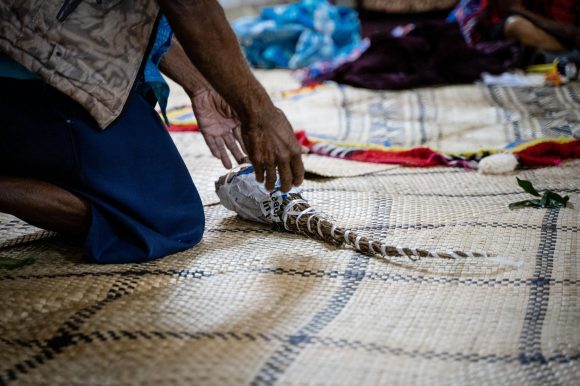

Click here to learn about some examples of daily traditions in Fiji.
This video shows a sevusevu featuring the current Fijian Prime Minister, Frank Bainimarama, and a guest. The sevusevu is not usually as lavish as this but here you can see how a ceremony might look and feel. This particular sevusevu, because of its prestige, features song and dance with the server dressed in masi.
The main ceremony is featured in 5:42-16:33. Listen to the Fijian words spoken and observe the manner of the kava preparation and presentation.
Traditional skills provide in everyday life. They also connect Fijians to their ancestry. Traditions are kept alive through memories of villagers and are taught in an oral tradition. Certain villages may specialise in one skill more than another but certain skills can be seen all over Fiji.
Watch this exceptional example of a Meke. This was filmed at the International Dance Festival in Hyderabad and the meke is performed by a professional traditional dance group. It shows different varieties in the styles of meke for male dancers.
Here’s Laisa explaining some of the challenges to modern Fijian village life, namely how village life is responding to and affected by westernisation. Some more details of specific village customs are included and how they are affected by modern times.
By understanding the richness of Fijian culture still present today, whether through appreciating the crux of identity in understanding the vanua or the immense community wealth engrained in Fijian society, it is obvious why preserving these intricacies are crucial for the development of the country. There is also an economic incentive as Fiji’s economy is largely dependent on tourism, much of which is fuelled by cultural experience. In addition, with traditional skills and practices still commonplace, they form the basis for income-generation in many communities. With these combined, it is no surprise that Culture and Heritage holds its own plan for preservation and development in Fiji’s National Development Plan.
- Cultural heritage forms an essential part of Fijian identity, this includes language, food, rituals and arts.
- These need to be safeguarded and promoted for future generations.
- The National Culture Policy and National Culture and Education Strategy helps protect and preserve cultural heritage.
- The cultural mapping programme will be key to gather information on traditional knowledge and heritage.
- The use of local culture in the tourism industry will promote and protect cultural heritage and the “Fijian Crafted” campaign will help to promote cultural performances and traditional crafts.
- The Fiji Museum and the National Library will be upgraded thus contributing to the preservation of Fiji’s heritage.
- Artisan production will be scaled up to provide genuine and culturally appropriate goods to tourists.
- Cultural heritage sites will be protected.
Although none of the 17 SDGs focuses exclusively on culture, it is integrated into a number of the goals and the ones below are particularly relevant to the outcomes of the FNDP found above:
- Target 4.7 refers to the aim to ensure that all learners acquire the knowledge and skills needed to promote sustainable development, including, among others, through education for global citizenship and the appreciation of cultural diversity and of culture’s contribution to sustainable development.
- Target 8.3 addresses the promotion of development-oriented policies that support productive activities as well as, among others, creativity and innovation.
- Targets 8.9 and 12.b refer to the need to devise and implement policies to promote sustainable tourism, including through local culture and products, and to the need to develop suitable monitoring tools in this area.
- Target 11.4 highlights the need to strengthen efforts to protect and safeguard the world’s cultural and natural heritage.
- How many Islands make up the Fiji archipelago?
- In what year did Fiji gain its independence?
- Who is the original ancestor of Fiji, the most powerful kalou vu?
- How many military coups has Fiji experienced?
- What is the Fijian name for their traditional ceremonial drink?
- What is the Fijian word for the idea of selfless giving/sharing?
- What is the traditional dance of Fiji?
- From which country did the design for most valued war clubs come from in pre-colonial Fiji?
- Who is the current Prime Minister of Fiji?
- Who was the chief who’s conversion led to the conversion to Christianity in 1854?

